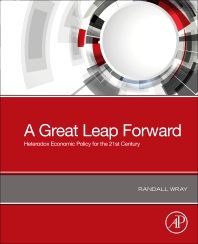
Publications
Who, What, Why: Could the US Get a $1tn Platinum Coin?
By Jon Kelly
BBC News Magazine, January 9, 2013. All Rights Reserved.
Campaigners want to prevent the US’s rising debt from bringing government spending to a halt by minting the world’s most expensive coin. Could this bizarre scheme become reality?
It sounds like the plot of some whimsical comedy‑the 1954 Gregory Peck film The Million Dollar Note springs to mind—but a drive to create super-valuable loose change is being taken seriously in the corridors of Washington DC.
A petition urging the creation of platinum coin worth $1tn (£624bn) has attracted nearly 7,000 signatures and the support of some heavyweight economists.
Experts say the plan would be lawful and should allow the government to keep spending if President Barack Obama fails to convince lawmakers to raise the “debt ceiling”—a cap, set by Congress, on the US government’s borrowing ability.
But most believe the coin is more likely to be used as a threat than ever actually come into being.
“When people first hear about it they think, ‘Oh, it’s a gimmick,’“ says L Randall Wray, professor of economics at the University of Missouri–Kansas City.
“But it makes you think harder about the way the government spends.”
The coin owes its widely discussed, though still hypothetical existence to the looming deadline over the debt ceiling—which, as things stand, will prevent the US government issuing new bonds and paying bills, in about two months.
Republicans, who control the US House of Representatives, have pledged to seek spending cuts before consenting to any increase in this limit.
But opponents fear this brinksmanship could threaten the US’s credit rating if the country’s debt reaches or breaks through this ceiling.
They say the Treasury could order the coin to be minted and then deposit it at the Federal Reserve, the US’s central bank.
Effectively, the coin is an accounting trick, says Cullen Roche, who blogs about finance and economics at Pragmatic Capitalism.
Its real purpose, however, would be political—to neutralise the threat by Republicans in Congress that federal employees would not be paid, he adds.
“It’s a loophole to replace something that’s totally insane with something that’s slightly less insane,” he says.
The campaign has been taken seriously by such eminent people as Nobel prize-winning economist and New York Times columnist Paul Krugman, and Philip Diehl, the former director of the United States mint. It has also inspired the Twitter hashtag, #MintTheCoin.
But it has attracted opposition, too. Republican Congressman Greg Walden has promised to introduce a bill to ban the government from creating high-value coins to pay its debts.
Walden said he feared the practice would be “very inflationary.”
Wray disagrees. “These trillion-dollar coins are held only by the Fed,” he says. “There’s no increase in the money supply out there.”
Supporters of the scheme also say the Federal Reserve could sell bonds, which would withdraw money from circulation.
As yet, however, no such coins exist anywhere. And even those who believe the plan is perfectly feasible concede that it is likely to remain a bargaining chip in the debt-ceiling talks, rather than becoming a reality.
“I think the president will be reluctant to do it because it undermines everyone’s credibility,” says Roche.
